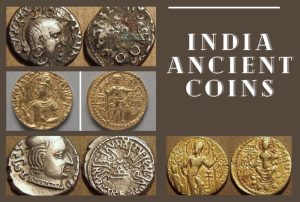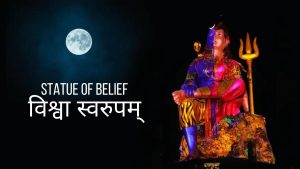Red Fort:
The Red Fort, also known as the “Lal Qila,” is a historical fort located in the city of Delhi, India. Built by the Mughal Emperor Shah Jahan in the mid-17th century, the fort is a UNESCO World Heritage Site and is considered one of the most important examples of Mughal architecture in India.
The Red Fort is a massive complex, covering an area of over 250 acres and is made of red sandstone. The fort features a variety of palaces, halls, and public spaces, including the Diwan-i-Am, the Diwan-i-Khas, the Rang Mahal, and the Moti Masjid. Each of these spaces is adorned with intricate carvings, inlay work, and frescoes, showcasing the incredible craftsmanship of the Mughal era.
One of the most striking features of the Red Fort is the Lahori Gate, which serves as the main entrance to the fort. The gate is adorned with intricate carvings and calligraphy and is surmounted by a large dome. From the Lahori Gate, visitors can access the Chatta Chowk, a covered market that was once used by the royal family to purchase goods.
The Red Fort is also home to the “Sound and Light Show,” which takes place every evening and brings the history of the fort to life through a combination of music, narration, and special effects. The show is a must-see for visitors and provides a unique perspective on the history of the fort.
In addition to its architectural and historical significance, the Red Fort also holds great cultural importance as it was the site of the Indian independence speech made by Jawaharlal Nehru, the first Prime Minister of India on August 15th, 1947, which marked the end of British colonial rule and the birth of the Republic of India.
The Red Fort is a must-see for history and architecture enthusiasts and offers a glimpse into the rich culture and history of India. It’s open to visitors every day of the week, but it’s advisable to check the official website or contact the local authorities for the most up-to-date information on visiting hours and ticket prices.

History of Red Fort
The Red Fort, also known as the “Lal Qila,” is a historical fort located in the city of Delhi, India. The fort has a rich history dating back to the 17th century, when it was built by the Mughal Emperor Shah Jahan. It’s considered one of the most important examples of Mughal architecture in India and is a UNESCO World Heritage Site.
The construction of the Red Fort began in 1638 and was completed in 1648. The fort was built using red sandstone, which gives it its name. The fort was designed by the chief architect of the Mughal Empire, Ustad Ahmad Lahori. The fort was built as the new imperial residence for the Mughal Emperor and his court, and it was intended to be a symbol of the Mughal power and prestige.
The Red Fort was the main residence of the Mughal emperors for nearly 200 years, and during this time, it served as the political and cultural center of the Mughal Empire. The fort complex includes several palaces, halls, and public spaces, each of which was used for different purposes. The Diwan-i-Am was used for public audiences, the Diwan-i-Khas for private audiences, the Rang Mahal for the ladies of the court, and the Moti Masjid for the Emperor’s private prayer.
The Red Fort also had several defensive structures, including walls, bastions, and moats. The fort had two main gates, the Lahori Gate and the Delhi Gate, which were used by the royal family and the general public, respectively. The Lahori Gate is adorned with intricate carvings and calligraphy and is surmounted by a large dome.
In 1857, during the Indian Rebellion, the Red Fort was seized by the British East India Company, and it remained under British control until India gained independence in 1947. On August 15th, 1947, Jawaharlal Nehru, the first Prime Minister of India, gave a famous speech from the ramparts of the Red Fort, in which he declared India’s independence from British colonial rule. This speech marked the end of British colonial rule and the birth of the Republic of India.
After India’s independence, the Red Fort was used as a military cantonment and was not open to the public. However, in 2003, the Indian government handed over the management of the fort to the Archaeological Survey of India, and it was opened to the public as a historical site. Today, the Red Fort is a popular tourist destination and attracts millions of visitors each year.
The Red Fort is a testament to the incredible architectural and engineering skills of the Mughal Empire, and it serves as a reminder of India’s rich cultural and historical heritage. The fort is a popular destination for both domestic and international tourists and is a must-see for anyone interested in the history and culture of India. The Red Fort is open to visitors every day of the week, but it’s advisable to check the official website or contact the local authorities for the most up-to-date information on visiting hours and ticket prices.
Lahori Gate , Red Fort
The Lahori Gate is one of the main entrance gates of the Red Fort, a historical fort located in the city of Delhi, India. The gate is adorned with intricate carvings and calligraphy and is surmounted by a large dome. It’s considered one of the most striking features of the Red Fort and is a must-see for visitors.
The Lahori Gate is the main entrance to the Red Fort and is located on the western wall of the fort. The gate is made of red sandstone and is adorned with intricate carvings and calligraphy. The gate is surmounted by a large dome, which is decorated with a lotus design, symbolizing the Mughal Empire’s power and prestige.
The gate is named after the city of Lahore in Pakistan, which was a major center of Mughal power during the reign of the Mughal Emperor Shah Jahan. The gate was used by the royal family and their entourage, and it was also used for state occasions and ceremonies.
The Lahori Gate leads to the Chatta Chowk, a covered market that was once used by the royal family to purchase goods. The market is a maze of narrow lanes, lined with shops selling a variety of goods, including textiles, jewelry, and handicrafts. The market is a great place to see traditional Indian crafts and to buy souvenirs.
The Lahori Gate is an important part of the Red Fort’s history and architecture and is a must-see for visitors. It’s open to visitors every day of the week, but it’s advisable to check the official website or contact the local authorities for the most up-to-date information on visiting hours and ticket prices.

Moti Masjid inside Red Fort
The Moti Masjid, also known as the “Pearl Mosque,” is a mosque located within the Red Fort, a historical fort located in the city of Delhi, India. The mosque is considered one of the most beautiful examples of Mughal architecture and is a must-see for visitors to the Red Fort.
The Moti Masjid was built by the Mughal Emperor Shah Jahan in the mid-17th century as a private mosque for the royal family. The mosque is made of white marble and is adorned with intricate carvings, inlay work, and frescoes. The mosque’s three domes are made of white marble and are adorned with kalash finials, which are a traditional Hindu architectural element.
The mosque’s interior is divided into three aisles, with the central aisle being the widest and highest. The mosque’s walls are lined with white marble and are adorned with intricate carvings and calligraphy. The mosque’s floor is made of white marble and is inlaid with geometric patterns.
The Moti Masjid is a great example of the Mughal’s architectural and artistic skills and is an important part of the Red Fort’s history and architecture. It’s open to visitors every day of the week, but it’s advisable to check the official website or contact the local authorities for the most up-to-date information on visiting hours and ticket prices. It’s worth noting that it’s a mosque and as such, it’s necessary to dress appropriately, cover your head and take off your shoes before entering.





